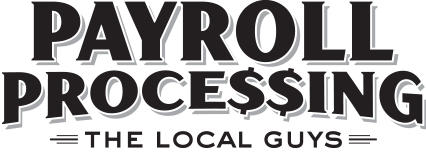How PFL Relates to DBL
Paid Family Leave (PFL) will be administered as part of DBL — your existing DBL policy is likely being modified to include a PFL rider when the program takes effect.
How are PFL and DBL similar?
- Paid Family Leave will be covered under an employer’s DBL policy, and both benefits must be provided by the same carrier.
- Both benefits are mandatory for covered employees.
- If your employees are covered under DBL, they must also have PFL.
Where they differ?
- DBL and PFL benefits cannot be collected at the same time.
- Combined, DBL and PFL must not amount to more than the 26-week benefit max during any 52 consecutive calendar weeks.
- If you’re a public employer, who is typically excluded from DBL coverage, you can obtain a PFL-only policy.
- Paid Family Leave is designed to help provide additional benefits for employees (both male and female) who have had a child, are adopting, or need time to care for a sick family member or relative on a qualifying military leave.
What kinds of business does PFL impact?
- PFL impacts any private organization with more than one employee (not counting the owner).
- If you’re currently covered under the existing Disability Benefits Law (Article 9 of Workers’ Compensation Law) then PFL applies to you.
- Even if you aren’t subject to the Family Medical Leave Act (FMLA), which mandates that companies provide unpaid leave for employees only if they are a certain size (more than 50 employees within a 75-mile radius), PFL will still apply.
Biggest changes for employers resulting from PFL
- Employers will be required to cover all eligible employees, though the cost of premiums will be paid through employee payroll contribution.
- As an employer, you can choose to contribute Paid Family Leave premium on behalf of your employees, or contribute a portion of the premium.
- You must continue full employee health coverage for any employee taking leave.
- You can offer your employees the option to use accrued vacation or charge all or part of their leave to PFL, thereby allowing them to receive their full salary for a portion of their leave (depending on how much time they have accrued) as opposed to the percentage provided for by PFL alone.
- If you’re a sole proprietor, a member of an LLP, or any other self-employed person, you can access coverage by filling out a voluntary coverage form and filing with the state.
Will claims and billing processes change with PFL?
- While much of the information regarding the billing and claims process is still being decided by regulators, we believe it’s likely that Paid Family Leave claims will be verified via a claim form, like DBL, and follow a similar process to DBL.
When Can Employees Use PFL?
- Any full-time employee employed for at least 26 consecutive weeks is eligible to take PFL.
- Part-time employees must be employed for at least 175 days to be eligible for leave.
- PFL is available for the following qualifying events:
- Having a child.
- Adopting or fostering a child.
- Caring for a sick family member.
- Caring for a family member after a qualifying military leave event.
What Happens When Employees Take PFL?
- It’s recommended that employees provide 30 days’ notice before taking the PFL benefit.
- During leave, employee PFL benefits will be paid by their company’s DBL insurance carrier.
- While on leave, employees retain their existing health insurance benefits; however, they don’t accrue other on-the-job benefits, such as paid time off.
- After leave, employees are entitled to return to their same or comparable position without loss of the benefits they would have accrued otherwise.
Does PFL Interact with FMLA?
The Family Medical Leave Act (FMLA) is a federal mandate that applies only to employers with 50+ employees. Paid Family Leave works on the state level to provide leave for employees at any organization, including small businesses with more than one employee (excluding the owner). PFL benefits must also be taken concurrently with FMLA time. In addition:
- FMLA provides only unpaid job security during an employee’s approved family/medical-related leave for up to 12 weeks.
- Once fully implemented in the target year of 2021, PFL provides job security and up to 67% of employee wages, up to a cap of the state’s average weekly wage. In its initial year, it provides 50% of employee wages (again, up to a cap). This benefit also depends on the length of eligible employee leave.
- PFL will affect employers who are not subject to the FMLA, which mandates leave for companies with more than 50 employees within a 75-mile radius.

